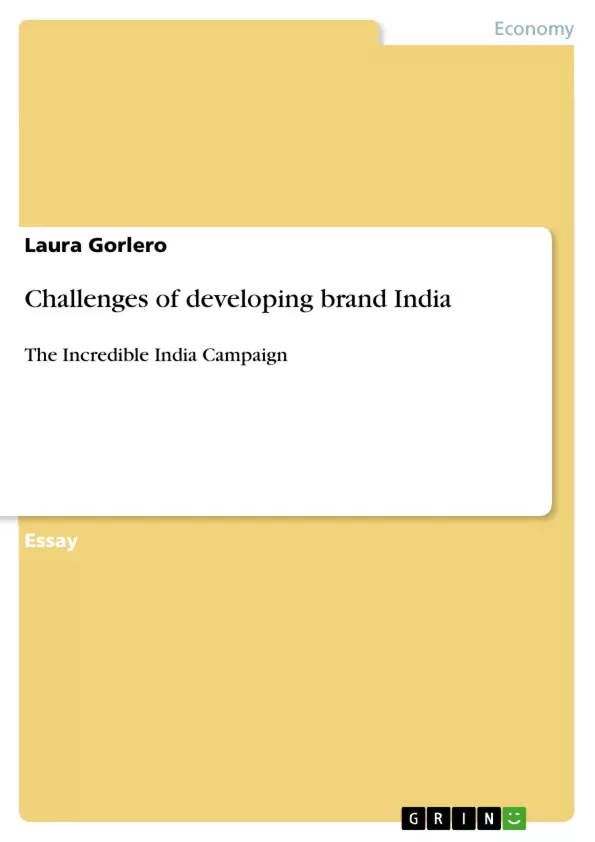The essay illustrates the challenges of developing the tourism marketing brand for India, taking into account the context in which the "Incredible India" campaign was created.
Inhaltsverzeichnis (Table of Contents)
- Challenges of developing Brand India: The Incredible India Campaign
- Destination Branding
- The Context of the 'Incredible India' Campaign
- The 'Incredible India' Campaign and India's Modern Landscape
- Criticism of the 'Incredible India' Campaign
Zielsetzung und Themenschwerpunkte (Objectives and Key Themes)
This essay aims to examine the challenges of developing "Brand India," specifically focusing on the "Incredible India" marketing campaign launched in 2002. The essay analyzes the campaign's context, explores the campaign's impact on India's image, and critically evaluates its strengths and weaknesses.
- Destination branding and its complexities
- The impact of socioeconomic changes on India's tourism industry
- The role of the "Incredible India" campaign in shaping India's international image
- Critical perspectives on the campaign's effectiveness and its portrayal of India
- The need for a more comprehensive and inclusive brand identity
Zusammenfassung der Kapitel (Chapter Summaries)
- Challenges of developing Brand India: The Incredible India Campaign: This chapter introduces the concept of "Brand India" and the "Incredible India" marketing campaign (IIC). It discusses the campaign's objectives, which include creating a unified brand identity for India and attracting international tourists.
- Destination Branding: This chapter defines destination branding and highlights its unique characteristics. It explains how branding a destination differs from branding a product, emphasizing the multidimensional nature of destinations and the need to consider diverse stakeholder interests.
- The Context of the 'Incredible India' Campaign: This chapter explores the socioeconomic context surrounding the launch of the IIC. It discusses the reforms and economic liberalization that took place in the 1990s, leading to a focus on tourism as an engine for economic growth.
- The 'Incredible India' Campaign and India's Modern Landscape: This chapter analyzes the campaign's visual imagery and its portrayal of India. It discusses the contrast between India's modern landscape and the campaign's focus on traditional and cultural elements.
- Criticism of the 'Incredible India' Campaign: This chapter presents various critiques of the IIC. It discusses concerns regarding the campaign's selective story-telling, its masking of socio-political conflicts, and its lack of a focused message for specific target markets.
Schlüsselwörter (Keywords)
This essay examines the challenges of branding India, focusing on the "Incredible India" campaign. It explores destination branding strategies, the impact of socioeconomic changes, the role of visual imagery in shaping perception, and the need for a more comprehensive approach to tourism branding. The key themes explored include: destination branding, tourism marketing, brand identity, image management, cultural politics, and critical perspectives on tourism development. The essay discusses the "Incredible India" campaign's strengths and weaknesses, analyzing its success in promoting India as a tourist destination while addressing criticisms regarding its selective story-telling and its portrayal of India.
- Quote paper
- Laura Gorlero (Author), 2016, Challenges of developing brand India, Munich, GRIN Verlag, https://www.grin.com/document/387542



